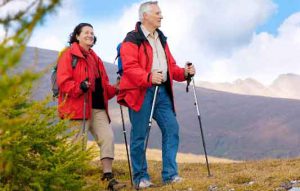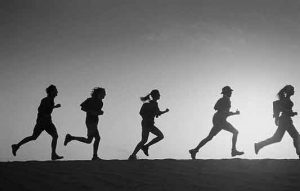
Attività fisica
A new large study shows that leisure time physical activity and occupational physical activity have opposite, and independent associations with cardiovascular disease risk and longevity.
“We adjusted for multiple factors in our analysis, indicating that the relationships were not explained by lifestyle, health conditions or socioeconomic status,” said study author Professor Andreas Holtermann of the National Research Centre for the Working Environment, Copenhagen, Denmark.
Previous studies have suggested that occupational activity is related to an increased risk for heart disease and mortality but have been too small to fully explain whether this was due to the manual work or because employees had unhealthy lifestyles or low socioeconomic status (e.g. low level of education).
This study included 104,046 women and men aged 20–100 years from the Copenhagen General Population Study with baseline measurements in 2003–2014.
 Participants completed questionnaires about activity during leisure and employment and were categorised as low, moderate, high, or very high activity for each.
Participants completed questionnaires about activity during leisure and employment and were categorised as low, moderate, high, or very high activity for each.
During a median follow-up of 10 years, there were 9,846 (9.5%) deaths from all causes and 7,913 (7.6%) major adverse cardiovascular events (MACE, defined as fatal and nonfatal myocardial infarction, fatal and non-fatal stroke, and other coronary death).
Compared to low leisure time physical activity, after adjustment for age, sex, lifestyle, health, and education, moderate, high, and very high activity were associated with 26%, 41%, and 40% reduced risks of death, respectively.
In contrast, compared to low work activity, high and very high activity were associated with 13% and 27% increased risks of death, respectively.
Similarly, after adjustments, compared to low leisure activity, moderate, high, and very high levels of leisure activity were associated with 14%, 23%, and 15% reduced risks of MACE, respectively. Compared to low work activity, high and very high levels were associated with 15% and 35% increased risks of MACE, respectively.
Professor Holtermann said: “Many people with manual jobs believe they get fit and healthy by their physical activity at work and therefore can relax when they get home.
Unfortunately, our results suggest that this is not the case.
And while these workers could benefit from leisure physical activity, after walking 10,000 steps while cleaning or standing seven hours in a production line, people tend to feel tired so that’s a barrier.”
While the study did not investigate the reasons for the opposite associations for occupational and leisure time physical activity, Professor Holtermann said: “A brisk 30-minute walk will benefit your health by raising your heart rate and improving your cardiorespiratory fitness, while work activity often does not sufficiently increase heart rate to improve fitness.
In addition, work involving lifting for several hours a day increases blood pressure for many hours, which is linked with heart disease risk, while short bursts of intense physical activity during leisure raises blood pressure only briefly.”
This study is published in European Heart Journal, a journal of the European Society of Cardiology (ESC).
See also:
Exercise and Vitamin D Better Together for Heart Health (2017-05-05)
Link…
People with atrial fibrillation live longer with exercise (2020-06-25)
Link…
Air pollution on city streets cancels positive health effects of exercise in over 60s (2017-12-20)
Link…
Too much sitting and too little exercise accelerate biological aging (2017-01-20)
Link…
For more information
The physical activity paradox in cardiovascular disease and all-cause mortality: the contemporary Copenhagen General Population Study with 104 046 adults
Link…
ESC
European Society of Cardiology
Link…
MDN
This post is also available in:
 Italian
Italian


